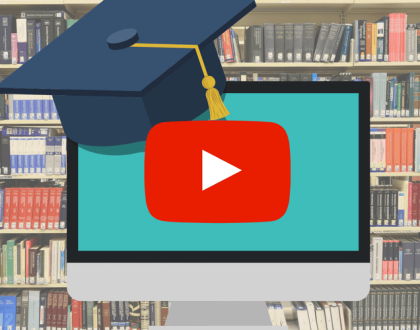Odds are that your results on that next big test (perhaps an affordable DSST credit-by-exam test) come down to how well you study for it. And how well you study often comes down to your study space. The good news: there’s really only one thing you need to eliminate in order to create the perfect place to hit the books. The bad news: that one thing is distraction, and it comes in many mischievous forms. Let’s examine the worst offenders, and discuss how to eliminate them once and for all.
Distraction #1: Your phone (and/or computer)
It weighs just a few ounces, is one of our society’s most incredible tools, and can also be an epic source of distraction. It’s your phone, and for all intents and purposes, it’s your worst enemy when trying to study. The problem is that we are all just mere mortals, and hard as we might try, very few of us are capable of resisting the next notification that comes through. Regardless of whether it’s a text, email, like, share, ring, or update, many of us have a reflexive relationship with our devices (meaning we don’t even think about what we’re doing until the phone is already in our hands).
Consequently, eliminating this distraction requires some drastic measures. We recommend turning the phone completely off (not just upside down or on silent) and placing it somewhere you can’t see or reach from your chair. Even if you don’t think you need this level of separation, try it during your next study session. You’ll discover that after a short time, it’s not only helpful, but liberating. And yes, this may mean spending a few bucks on a calculator or a wall clock, but it’s well worth it in the long run.
Computers offer a unique challenge because we often need them to dive into our studies. If you do require a computer, turn off your WiFi, if possible. This will help keep your mind off your inbox, and prevent mindless browsing.
Distraction #2: People
People are the worst. At least when it comes to buckling down to work, it can seem like your significant other, friends, family, roommates, and even your rowdy neighbors, are all out to get you.
That’s why it’s crucial to have a quiet, low traffic area that you utilize for studying, and for studying only. Even if it’s a closet or a nook in your bedroom, the key is setting up a desk that everyone identifies as your “do not disturb” space. An added benefit is that as you keep returning to your designated learning space, your brain will also enter into “study-mode” a little quicker each time.
As far as libraries, coffee shops, and other public studying destinations, there’s nothing fundamentally wrong with these spots. It’s just that finding the perfect seat (outfitted with enough space, an outlet, and WiFi if needed) can drain your valuable time and mental energy, and lead to distracting noises and interactions. That being said, if your go-to cafe or a hidden corner in the library has brought you successful study sessions in the past, go for it!
Distraction #3: Headphones
It may seem like a great way to turn any space into a study space is to pop on some headphones. Although this can work in a pinch, it won’t create the ideal study space. Even if your headphones are playing ambient noise or classical music, everything you’re hearing is still only coming from a single source. This can soak up your concentration and brainpower faster than if you have ambient noise or classical music playing in the background. Even still, any added music or ambient noise should only be considered if you’re trying to drown out other environmental sounds that are out of your control (roommates, traffic noise, etc). And remember, music with lyrics is almost always a guaranteed concentration-killer. Despite the endorphin rush and good vibes you might get from your favorite song, it’s not doing you any favors when trying to retain new knowledge, solve problems, or write.
To summarize, aim for a space that’s quiet and peaceful enough without white noise or music. If that’s an impossible feat, add ambient noise or lyric-free music to your environment using speakers or a white noise machine (not headphones).
Distraction #4: Your oh-so-comfy bed. Or recliner. Or couch. Or bean bag chair.
The sad truth is that any place you associate with sleeping or relaxing does not make for the best study space. These are spots that trigger your brain to turn off active thinking, and it takes a lot of subconscious mental effort to overcome that default setting throughout a study session. You could also end up feeling sleepy simply because your body is used to winding down when on that piece of furniture.
As noted above, in a perfect world, you’d only use one place to study, and you’d only use that space for studying (versus reading for pleasure, gaming, movies, online shopping, etc). This helps your brain preserve as much energy as possible for the actual studying, rather than having to adjust for some variable. Additionally, having a home for all your studying materials and supplies will make it easier to dive into your work right away, rather than having to collect everything.
Distraction #5: Food, especially junk food.
Pulling an all-nighter on a diet of cheese curls and soda may seem like a rite of passage, but those empty calories could be what leads to the all-nighter in the first place! Over-consuming sugar, salt, processed foods, and caffeine can give you a short-term lift, but will ultimately leave you jittery, hungry, and fatigued.
Instead, avoid eating at all while in your study space. Plan for snack breaks, and prepare healthy snacks and meals (fruit, whole grains, protein-rich foods, etc) ahead of time. This will ensure that your study space retains its status as a study-only area, and will give you a little motivation to stay focused.
Lastly, bring a little outside in.
Even though removing the above distractions is a huge part of the equation, it’s also important to keep natural elements in your space. If possible, make sure you’re getting at least a small amount of sunlight, and keep in mind that plants are great study buddies. They help purify the air around you, and can add an earthy touch to an otherwise sterile environment. Finally, stay organized! A cluttered setting can quickly lead to a cluttered mind.
Best of luck designing your new study space! As soon as you’ve hunkered down and are ready to put your studying to the test, don’t forget that DSST credit-by-exam is one of the easiest and most affordable ways to earn college credit. And the best part is that there are thousands of reputable universities that accept DSST credit. Click here to learn which subjects are available, which institutions accept DSST credit, and details about test-taking.










